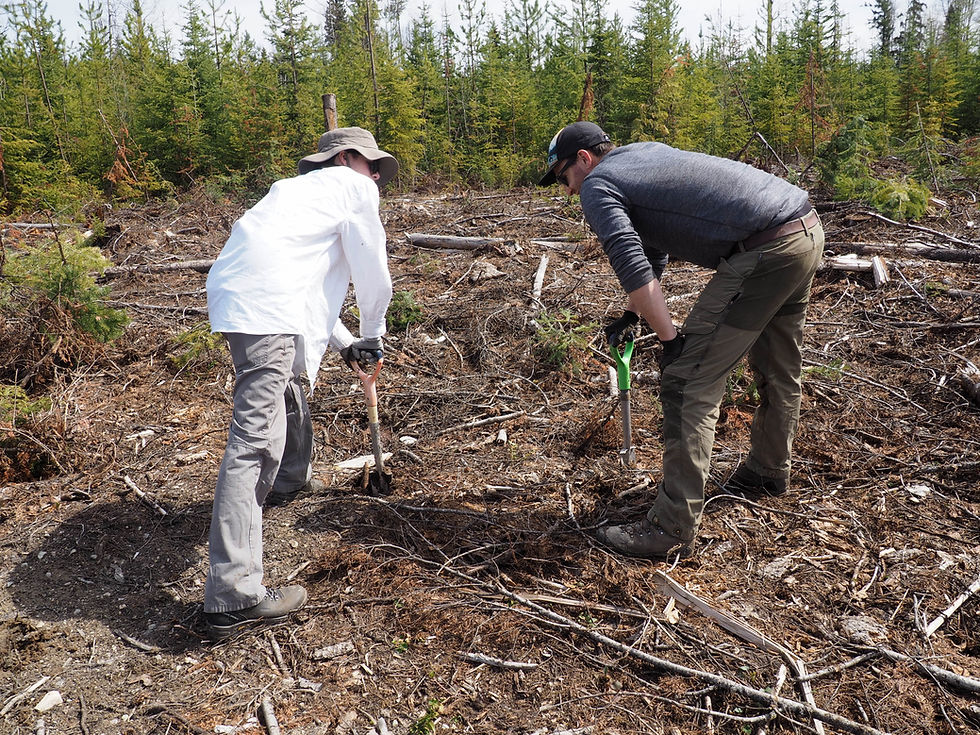- Jordan Tesluk
- Apr 29
- 3 min read
Does bear spray work?
Answer: Yes, it works on bears and many other animals but must be used correctly.
While the risk of being attacked by a bear remains very low for tree planters, it remains important to be prepared to respond properly in the case of a dangerous encounter. Some workers choose to carry bear spray with them while working, and some companies have made this mandatory for their workers.
Research says....
The effectiveness of bear spray is strongly supported by a 2008 review of bear attacks in Alaska from 1985 to 2006. Smith et al. found that bear spray was effective in stopping aggressive behavior in bears in 92% of cases, and 98% of persons using bear spray in close-range encounters escaped uninjured. There have also been numerous examples of bear spray being used effectively in forestry operations, and a small number of attacks which experts believe could have been prevented if bear spray had been carried by the worker. These include a 24-year old tree planter who was injured in a grizzly bear attack near Tumbler Ridge in 2003, and a forestry engineer who was attacked near Rivers Inlet in 2019.
Proper handling practices are important
Resistance to the use of bear spray includes concerns that it poses a risk to workers if it is accidentally deployed. Proper handling of bear spray can greatly reduce the risk of accidental exposure, particularly by ensuring it is stored properly during transport. Most employers require bear spray to be stored in small sealed totes, such as the Kodiak Bear Spray Travel Container that can be purchased at outdoor shops like Mountain Equipment Coop for as little as $18. Bear spray stored under a seat, in a truck door, or in a backpack in the truck bed is vulnerable to being crushed or stepped on, which can endanger the occupants of the vehicle, ruin the interior, or result in damage to the canister that makes it inoperable in a moment of need. In helicopter operations, it is absolutely mandatory that bear spray is stored in totes outside the cockpit to prevent the chance of a mid-air incident.
When carrying bear spray in the worksite, it should be kept in a protective holster made of Cordura or other robust material to ensure it is protected from impacts and immediately available to the workers in a time of need. Simply throwing bear spray in the back planting bag is inadvisable as it may get crushed if left in the bags, is harder to fish out when needed, and may become jammed with dirt that prevents an effective deployment of spray. Bear spray canisters must also be inspected regularly to ensure they are in good condition and replaced when expiry dates are reached to ensure the product is fresh with adequate propellant.
Proper training is required to use bear spray to learn how to prepare the canister, identify the correct range, assess wind, and to take additional steps to deter a bear prior to resorting to the spray.
Bear spray compared with dogs or guns
Some workers claim that their dog will protect them, but unfortunately dogs are identified among the leading causes of bear attacks due to them harassing the bears and bringing them back to the owners or instigating an aggressive response when the bear perceives the dogs as a threat or competition to its territory or food source. Dogs are also more difficult to have in the workplace at all times, and many breeds are not properly suited to defending people from wildlife. Firearms may be effective in the hands of a properly trained user and are often kept by licensed staff in tree planting camps. However, they are not practical to carry while working, require much more training and accuracy to be effective, and can result in much more serious injury to people if they are not used properly.
Ultimately, a can of bear spray costs about $50, and can be effectively used by almost any properly trained worker with a high level of effectiveness. It is also recommended as an effective deterrent by leading bear safety experts, including Kim Titchener from Bear Safety and More, who provides training sessions for employers in forestry and other industries.


